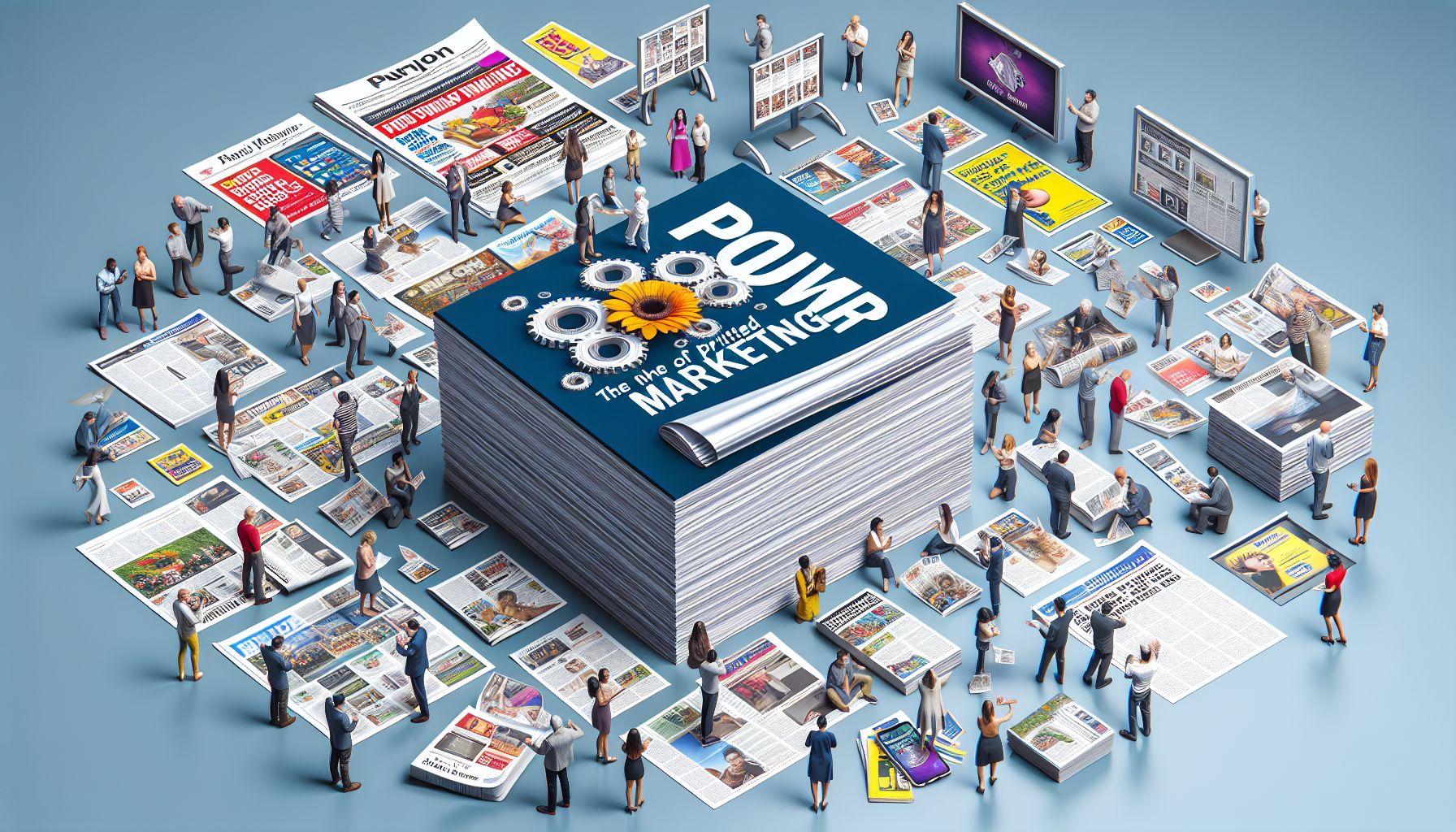In today’s digital age, it’s easy to get caught up in the hype of online marketing strategies such as social media advertising, email campaigns, and SEO tactics. While these digital methods have their benefits, it’s important not to overlook the value of printed marketing materials. From business cards and brochures to direct mail and flyers, printed marketing remains a powerful tool for reaching your target audience and making a lasting impression. In this blog post, we’ll explore the benefits of printed marketing and why traditional techniques still matter in today’s competitive business landscape.
The Tangible Advantage of Printed Materials
One of the key advantages of printed marketing materials is their tangibility. Unlike digital ads that can easily be scrolled past or ignored, physical materials such as business cards and brochures are more likely to be held, touched, and remembered. In fact, a study by Temple University found that physical materials engage more of the senses, making them more memorable and impactful than digital ads alone.
When a potential customer receives a printed brochure or flyer in the mail, they have something tangible to hold onto and refer back to later. This tangible quality can help increase brand recall and drive action, whether it’s visiting a website, making a purchase, or contacting a business for more information. In a world inundated with digital noise, printed materials stand out by providing a physical connection to your brand that can’t be matched online.
The Personal Touch of Printed Marketing
In addition to their tangibility, printed marketing materials also offer a personal touch that can help build relationships with customers. Personalized direct mail pieces, for example, can make recipients feel special and valued, increasing the likelihood that they will engage with your brand. By including the recipient’s name, address, or other personalized details on a printed piece, you can show that you’ve taken the time to tailor your message specifically to them.
Furthermore, printed materials allow for more creative customization than digital ads. With printed brochures, flyers, and other materials, you have complete control over the design, layout, and messaging, allowing you to create a unique and memorable piece that reflects your brand personality. Whether it’s a bold color scheme, eye-catching graphics, or a clever headline, printed materials offer endless possibilities for creativity and personalization.
The Trust Factor of Printed Materials
Another advantage of printed marketing materials is their ability to build trust and credibility with customers. In a world where online scams and phishing attacks are all too common, printed materials offer a level of authenticity and legitimacy that can help put customers at ease. A professionally designed business card or brochure, for example, can make a positive first impression and convey a sense of professionalism and reliability.
Furthermore, printed materials are more likely to be perceived as trustworthy than digital ads, which can easily be spoofed or manipulated. By investing in high-quality printed materials, you signal to customers that you are a legitimate and reputable business that can be trusted. This trust factor can help set you apart from competitors and make a positive impression on potential customers.
The Versatility of Printed Marketing
Printed marketing materials offer a level of versatility that is hard to match with digital ads alone. From business cards and brochures to postcards and banners, printed materials come in a wide range of formats and sizes that can be tailored to fit your specific marketing goals. Whether you’re looking to promote a new product, announce a special promotion, or simply raise brand awareness, printed materials offer a versatile and cost-effective way to reach your target audience.
Printed materials can also be distributed in a variety of ways, from direct mail campaigns and in-store displays to trade show booths and networking events. By strategically placing printed materials in high-traffic areas where your target audience is likely to see them, you can increase brand visibility and generate leads in a way that digital ads alone cannot.
The Environmental Impact of Printed Marketing
While digital marketing is often touted as a more environmentally friendly alternative to printed materials, the reality is more complex. While it’s true that printed materials require paper and ink, modern printing techniques and sustainable practices have made it possible to produce high-quality printed materials with minimal environmental impact.
Many printing companies now offer eco-friendly options such as recycled paper, soy-based inks, and energy-efficient printing processes that minimize waste and reduce carbon emissions. By choosing a printing company that prioritizes sustainability, you can feel good about using printed materials as part of your marketing strategy while minimizing your environmental footprint.
Conclusion
In conclusion, printed marketing materials remain a powerful and effective tool for reaching your target audience and making a lasting impression. From their tangibility and personal touch to their trust factor and versatility, printed materials offer a range of benefits that can help set your brand apart in today’s competitive business landscape. By incorporating printed materials into your marketing strategy, you can create a memorable and impactful experience for your customers that digital ads alone cannot match. So next time you’re planning a marketing campaign, don’t overlook the power of printed materials – they just might be the key to reaching your target audience and achieving your business goals.
